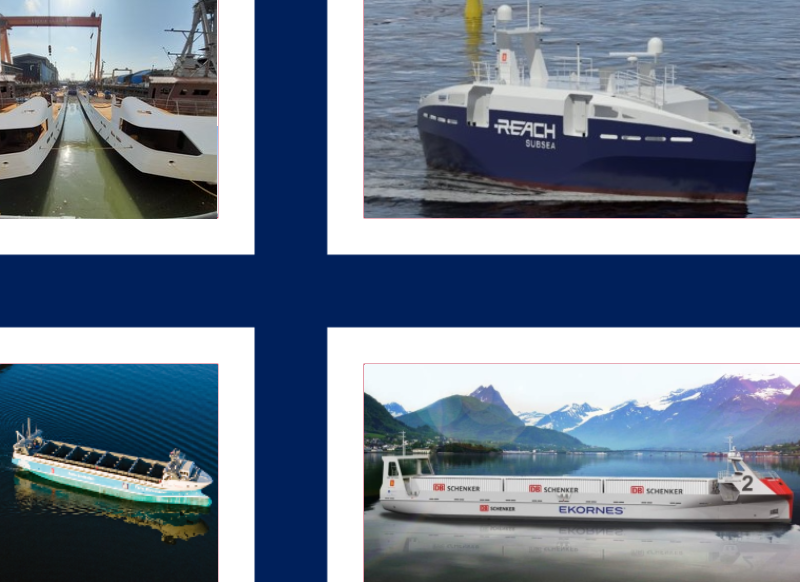There could be six unmanned and/or autonomous vessels in Norwegian waters soon. Five are confirmed.
Norway could be set to get another highly autonomous cargo vessel in its waters with the announcement of a recent pre-study for a new vessel between DB Schenker and Norwegian furniture maker Ekornes.
It would become the fourth cargo vessel with unmanned and autonomous capabilities following the recent launch and entry into service of Yara Birkeland and near completion of two Oslo Fjord shuttle vessels for Norwegian grocery wholesaler ASKO.
It would also be the sixth vessel for Massterly, the Wilhelmsen/Kongsberg joint venture, to manage.
This latest vessel, the contract of which is still in the letter of intent stage, will be electric just like the other vessels, and is being brought into existence through the work of cargo owners, not traditional shipowners.
And just like the Yara and ASKO vessels the Ekornes vessel will run between dedicated points, in this case between the manufacturers home port, Ikornnes and the port of Ålesund, where cargo can be transhipped around Norway and overseas.
The sea route would replace existing vessels hired in for the 43km sea voyage, or a 31km one hour lorry journey, which already includes a 30-minute public road ferry.
The vessel is being designed by Naval Dynamics AS and will be powered by another Norwegian company, Wattn. Naval Dynamics’ Autobarge design, which is the basis for the Ekornes vessel, is also being used for the ASKO vessels, which are being completed in Cochin shipyard, India.
The initial Ekornes/DB Schenker design is for a 50 m long barge with 300 dwt tonnage, capable of carrying nine, or 18 if double stacked, containers.
The aim is for it to be unmanned and supervised by Massterly staff at the company’s remote operation centre which is currently under construction in Horten in the Oslo Fjord.
The battery powered ASKO pair are 67 m long and have the possibility to carry 16 trailers apiece for delivery of goods, while the Yara Birkeland remains the largest at 80 metres and with the capability of carrying 120 containers with 6,8MWh battery capacity.
Yara Birkeland is however not currently being operated unmanned, but with a staged approach to turning the vessel fully autonomous, with the shipboard staff eventually moved to the remote operations centre. The ASKO barges will also begin operations manned, with the aim of moving the team to the remote centre.
With the experience gained in developing and using the control centre and onboard software systems for remote and then fully autonomous remote operations, Massterly hopes to be able to demonstrate autonomous capabilities to allow future vessels to be delivered and put into service fully unmanned from the start.
In a press statement Tom Eystø, Massterly Managing Director said “We find it very interesting that one of the world’s largest logistics providers, DB Schenker, is seeing the benefits of uncrewed, zero emissions shipping and we hope this project will inspire a larger volume of similar vessels.”
Also in Norway a new company, Reach Subsea announced in August 2021plans to build a pair of 24 m long remote controlled surface vessels capable of deploying tethered underwater ROVs for subsea work offshore, offering a smaller, more cost efficient alternative to larger manned offshore vessels.
The contract with Kongsberg was signed in April this year to build the first two vessels. Wilhelmsen has a 22% stake in Reach Subsea.
While the Yara, ASKO and Ekornes vessels will be exclusively in Norwegian territorial waters, the Reach vessels will operate in international waters and likely need agreements from other nations to be able to do so. It may be that their initial operations could be made with manned “mother Ships” in escort before they too are allowed to move to fully remote operations.































